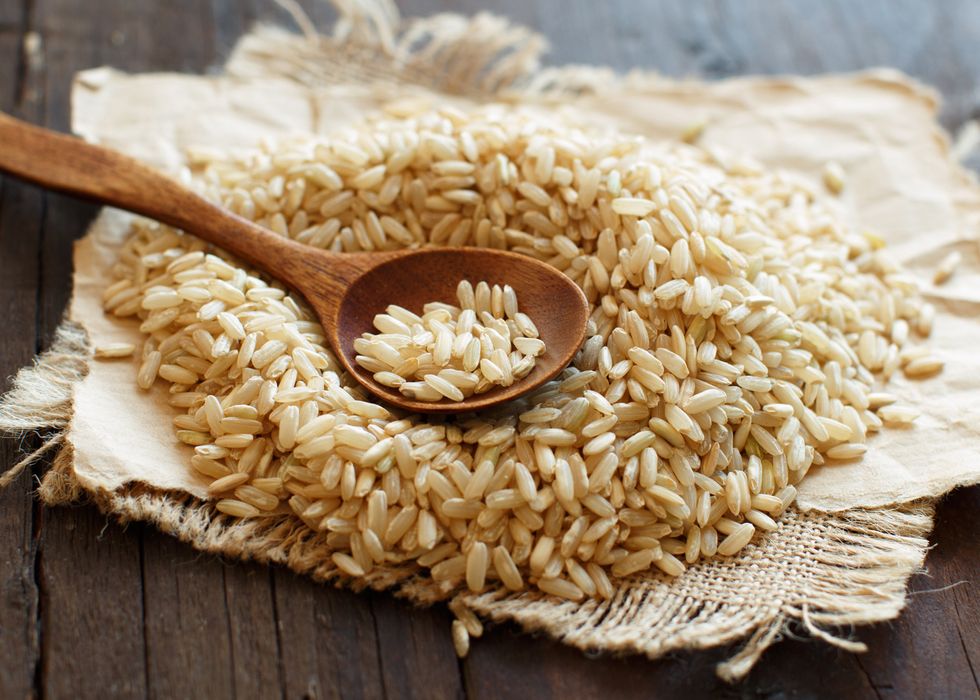
A study has highlighted its antioxidant properties. One more recognition for a cereal with many records: brown rice is the most effective on the intestinal flora and the one with the best proteins. And, in addition, the Italian one is the top (we are also the first producer in Europe)
Brown rice: how many of us remember to put it in the shopping cart when they go shopping? Few, given that sales, although growing (they went from 3 to 7.5 million kg between 2013 and 2016), are still marginal compared to "white" and parboiled rice, and considering that false myths flourish on brown rice and absolutely unfounded urban legends. Yet buying it more often would be an important gesture to take care of well-being as brown rice is turning out to have a wide range of characteristics that are important to health and shape. To the point that scientists consider it a real functional food, rich not only in fiber, minerals and vitamins, but also in bioactive compounds (such as polyphenols) which are proving to be precious allies in the prevention of the most common chronic diseases, starting with from various types of cancer, as revealed by a study coordinated by the Risi National Institute and carried out in collaboration with the Umberto Veronesi Foundation and the Department of Biosciences of the University of Milan.
The extra edge of brown rice
It is now established that the consumption of whole grains is associated with a reduction in the risk of chronic diseases and is explained by their high intake of phytonutrients, which contribute to the prevention of colon cancer and other digestive cancers, breast and prostate cancer . The positive effects on gallbladder inflammation, diverticulitis, cardiac ischemia and colorectal cancer are mainly due to the soluble and insoluble fibers, which have been shown to reduce cholesterol and promote gastrointestinal transit and increase the production of acids. short-chain fats by "good" bacteria. The preventive effects are attributed to ferulic and hydroxycinnamic acids, which have anti-inflammatory, antioxidant and antimutagenic powers and are originated by intestinal bacteria starting from polysaccharides present in the fiber. In addition, in brown rice there are also other anticancer components: they are the protease inhibitors (ie the enzymes that degrade proteins), which in the laboratory have shown a protective activity against colon, breast and skin cancer. Finally, a mention also deserves antioxidants such as polyphenols which, although less present than pigmented rice, are also contained in brown rice and perform an anti-inflammatory action, almost halving the levels of the iNOS protein, an important mediator of inflammation. .
Because it is preferable to white rice
Inside a grain of brown rice there is much more than what is contained in a grain of white rice (the so-called “brillato”). The credit goes to the manufacturing process that preserves most of the components naturally present in this cereal, keeping it more intact and complete. "Brown rice and pigmented rice (such as black or red rice) are about four times richer in fiber than white and parboiled rice, as they undergo a lower degree of processing and therefore retain a greater amount of external tissues of the grain of rice ”explains Katia Petroni, Associate Professor of Genetics at the University of Milan. In addition to fiber, brown rice has a good amount of vitamins, minerals and essential fatty acids (especially in the germ) which, on the other hand, are scarce or absent in "white" rice. For example, in brown rice there is twice as much iron, calcium and phosphorus, and there is also vitamin E, which is absent in polished rice. Furthermore, the quantity and the ratio of potassium and magnesium are optimal in brown rice, useful in maintaining correct bone mass and effective muscle function. Fats are also much more numerous (in particular Omega 6 and Omega 3): brown rice has almost five times more lipids than white rice, concentrated in the germ that is eliminated during rice polishing. Hence the advice to keep brown rice in vacuum packs and consume it more quickly, because the fat content makes it go rancid more easily than polished rice.
Proteins: the best among cereals
FAO says it: rice (and wholemeal rice in particular) is the cereal with the highest biological value proteins, because they contain almost all the eight "essential" amino acids, that is, we must introduce with food. Therefore, although it is not very rich in proteins (2% in the cooked product), rice is still the cereal that provides the highest quality ones. And wholemeal is the one that contains the most (2.5% after cooking). A significant factor especially for vegetarians and vegans, who find rice an important food to reach the daily protein requirement.
How to get all the best of brown rice
Brown rice has many passionate supporters and also many opponents, who criticize it from various points of view. The most popular argument is the presence in this food of anti-nutritional compounds (such as trypsin inhibitors, lectin, horizacystatin and phytic acid) which, by reducing the bioavailability of other nutrients, would effectively prevent our body to assimilate the vitamins and minerals present in this cereal. The Veronesi Foundation clarifies this point, in one of its publications dedicated to rice, where it writes that "these compounds are actually present in the rice husk, but the heat to which it is exposed during cooking or preventive soaking of the grains in water cold for at least half an hour, partially deactivates their anti-nutritional effect. Furthermore, these same compounds have also turned out to be "nutraceutical" elements (that is, with therapeutic or preventive properties) with potential antioxidant and antitumor effects ".







